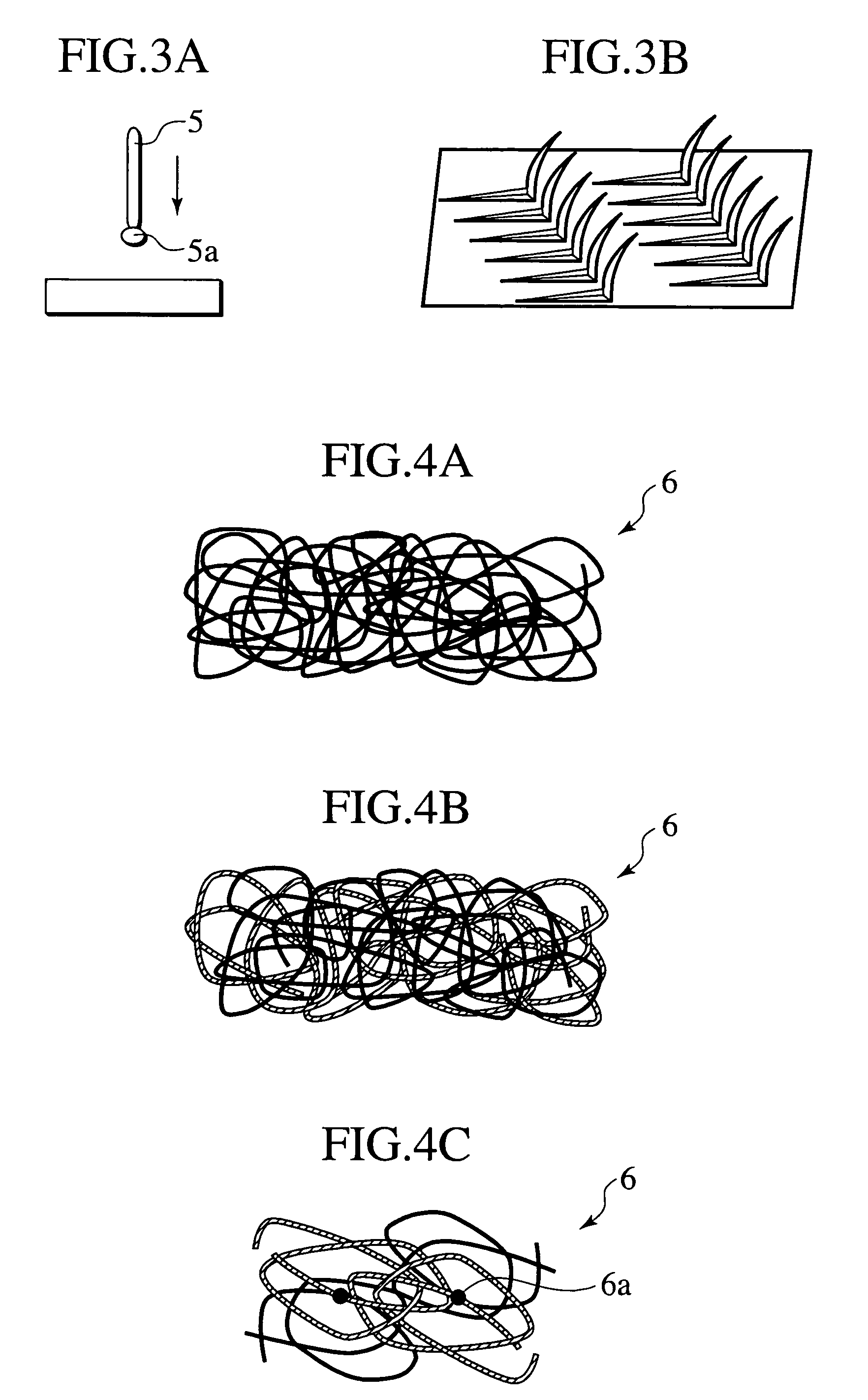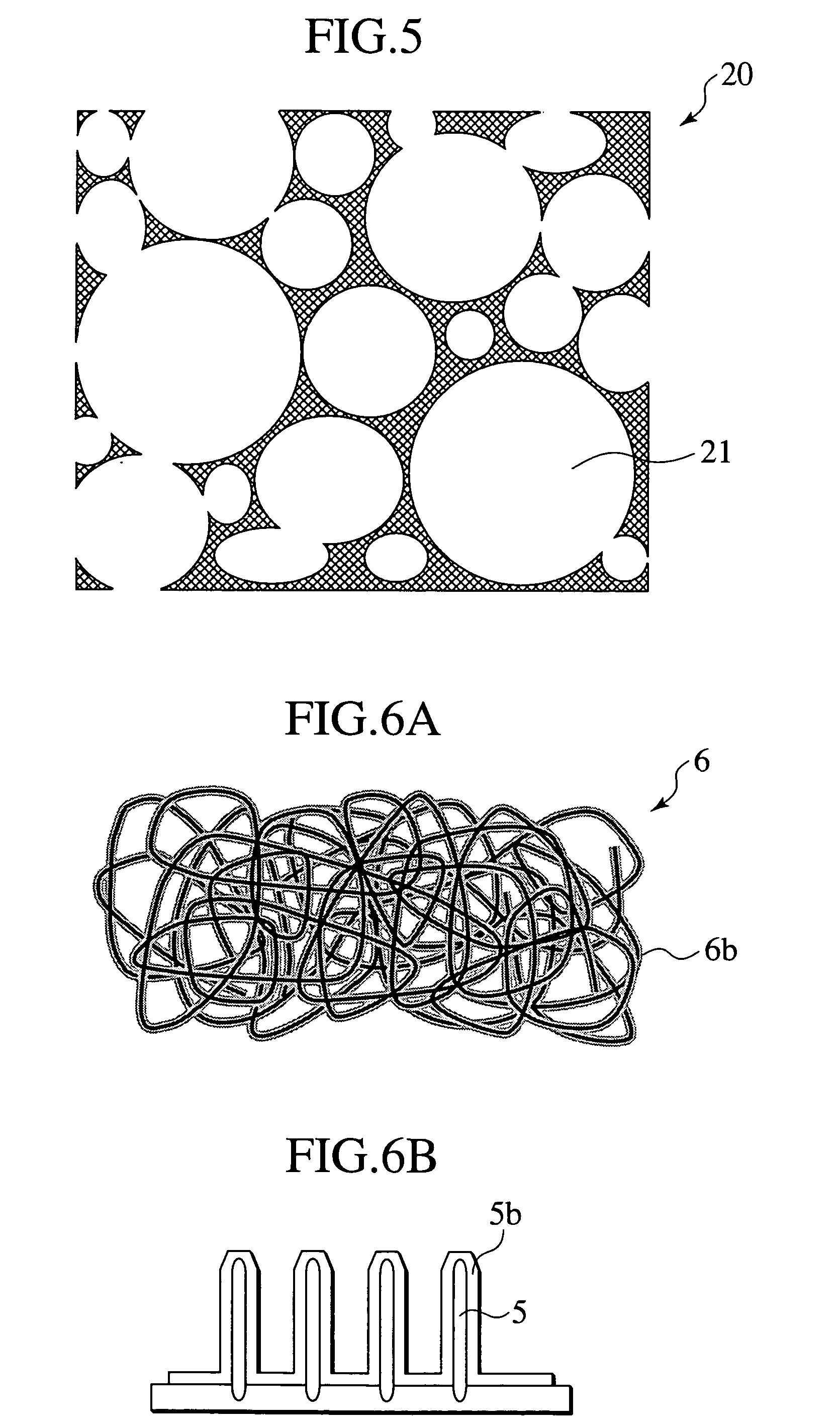Fuel cell collector structure and solid oxide fuel cell stack using the same
- Summary
- Abstract
- Description
- Claims
- Application Information
AI Technical Summary
Benefits of technology
Problems solved by technology
Method used
Image
Examples
example 1
[0065]FIGS. 9A, 9B, and 9C show the single cell constituting the fuel cell collector structure of Example 1 and the collector arranged in the single cell. The cell shown in FIGS. 9A to 9C is an electrolyte support type in which the electrolyte layer is a support substrate.
[0066] The single cell 1 of Example 1 was formed by sandwiching the both surfaces of the electrolyte layer 3 between the air electrode layer 2 and the fuel electrode layer 4. The electrolyte layer 3 was made of 8 mol % yttria-stabilized zirconia (8YSZ) having the dimensions of about 12 cm square and the thickness of 100 μm. The electrolyte layer 3 included a support portion 3a in which a gas sealing portion and the gas passage were formed, while supporting the cell when the electrode was formed to be stacked with another single cell.
[0067] The air electrode layer 2 and the fuel electrode layer 4 had the dimensions of about 10 cm square, and the air electrode layer 2 and the fuel electrode layer 4 were baked in th...
example 2
[0081] The fuel cell stack having the structure shown in FIG. 8 was produced and variation of the output was measured. The single cell 1 used in Example 2 was one in which the fuel electrode layer 4 made of NiO-8YSZ having the dimensions of 10 cm square and the thickness of 10 μm and the air electrode layer 2 made of La0.8Sr0.2MnO3 having the dimensions of 10 cm square and the thickness of 10 μm were provided on the electrolyte plate made of 8YSZ having the dimensions of 12 cm square and the thickness of 50 μm.
[0082] About 5% Pt fiber having the excellent heat resistance, oxidizing atmosphere resistance, and reduction atmosphere resistance was baked as the electrically conductive projection 5 on the surfaces of both the electrodes at the same time when the electrode layer was formed.
[0083] The metal felt made of the Ni metal thin wire having the diameter of 20 μm was used as the collector 6 on the fuel electrode layer 4 side. Further, the porous electric conductor made of the meta...
example 3
[0087] The collector structure of Example 3 was obtained by repeating the same procedure as Example 1 except that the electrically conductive projections 5 on the single cell 1 were formed by the plating. FIG. 17 shows the enlarged view of the collector structure, and FIGS. 18A to 18D show the process of producing the collector structure.
[0088] As shown in FIG. 18A, the fuel electrode layer and the air electrode layer were respectively baked on the surfaces of the electrolyte layer made of 8YSZ to produce the single cell 1.
[0089] As shown in FIG. 18B, after the electrically conductive material such as Pt was deposited on both the surfaces of the single cell 1 with the thickness of about 100 nm, both the surfaces were coated with resist films 12, and the aperture portions in which a Pt layer is exposed at the predetermined position were formed by a photolithographic technology.
[0090] As shown in FIG. 18C, the electrically conductive projections 5 made of Pt were formed on the surf...
PUM
 Login to View More
Login to View More Abstract
Description
Claims
Application Information
 Login to View More
Login to View More - R&D
- Intellectual Property
- Life Sciences
- Materials
- Tech Scout
- Unparalleled Data Quality
- Higher Quality Content
- 60% Fewer Hallucinations
Browse by: Latest US Patents, China's latest patents, Technical Efficacy Thesaurus, Application Domain, Technology Topic, Popular Technical Reports.
© 2025 PatSnap. All rights reserved.Legal|Privacy policy|Modern Slavery Act Transparency Statement|Sitemap|About US| Contact US: help@patsnap.com



